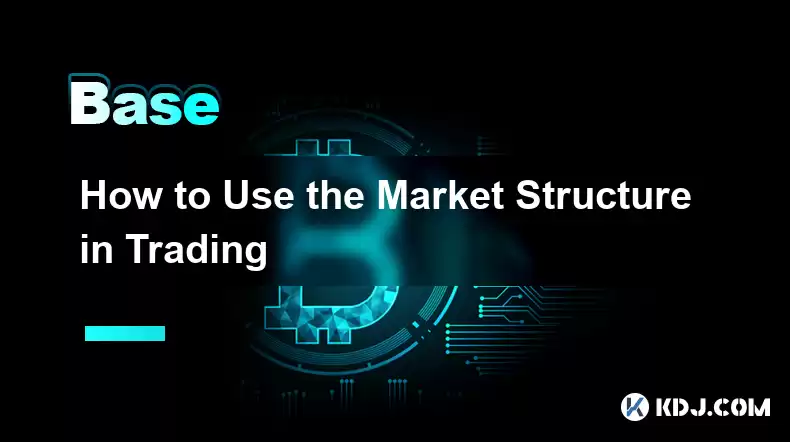-
 Bitcoin
Bitcoin $115000
0.12% -
 Ethereum
Ethereum $3701
4.50% -
 XRP
XRP $3.081
2.99% -
 Tether USDt
Tether USDt $0.0000
-0.01% -
 BNB
BNB $767.9
1.45% -
 Solana
Solana $169.5
3.13% -
 USDC
USDC $0.9999
0.01% -
 Dogecoin
Dogecoin $0.2106
4.30% -
 TRON
TRON $0.3334
1.62% -
 Cardano
Cardano $0.7564
2.54% -
 Stellar
Stellar $0.4165
0.76% -
 Hyperliquid
Hyperliquid $38.75
0.25% -
 Sui
Sui $3.593
3.00% -
 Chainlink
Chainlink $17.08
3.59% -
 Bitcoin Cash
Bitcoin Cash $573.6
4.35% -
 Hedera
Hedera $0.2508
-0.84% -
 Avalanche
Avalanche $23.07
6.46% -
 Ethena USDe
Ethena USDe $1.001
-0.02% -
 Litecoin
Litecoin $120.8
8.17% -
 UNUS SED LEO
UNUS SED LEO $8.943
-0.32% -
 Toncoin
Toncoin $3.400
-5.60% -
 Shiba Inu
Shiba Inu $0.00001255
1.54% -
 Uniswap
Uniswap $9.908
6.32% -
 Polkadot
Polkadot $3.718
2.10% -
 Monero
Monero $303.0
-0.74% -
 Dai
Dai $0.9999
-0.02% -
 Bitget Token
Bitget Token $4.392
0.91% -
 Cronos
Cronos $0.1403
6.31% -
 Pepe
Pepe $0.00001076
1.13% -
 Aave
Aave $267.2
1.80%
How to Use the Market Structure in Trading
Understanding market structure empowers traders to uncover market dynamics, identify key levels, determine market direction, and craft effective trading strategies while managing risk.
Dec 16, 2024 at 04:10 pm

Key Points
- Understanding market structure
- Identifying key levels
- Determining market direction
- Using market structure to develop trading strategies
- Risk management and position sizing
Understanding Market Structure
Market structure refers to the overall pattern of price action in a financial instrument, such as a cryptocurrency, over a specific period of time. It reflects the balance of supply and demand and provides insights into the underlying market dynamics. Identifying market structure is essential for successful trading as it helps traders understand the direction of the trend and anticipate future price movements.
Identifying Key Levels
Key levels in market structure are areas where the price action exhibits a significant reaction, such as support and resistance levels. Support levels represent areas where demand exceeds supply, preventing the price from falling further, while resistance levels represent areas where supply exceeds demand, preventing the price from rising further. Identifying these key levels allows traders to gauge the strength of the trend and determine potential trading opportunities.
Determining Market Direction
The direction of the market is determined by the relationship between the support and resistance levels. When the price action consistently breaks through and closes above a resistance level, it indicates a bullish trend. Conversely, when the price action breaks through and closes below a support level, it indicates a bearish trend. Understanding the market direction is crucial for developing effective trading strategies.
Using Market Structure to Develop Trading Strategies
Once the market structure has been identified and the market direction determined, traders can develop trading strategies to capitalize on market opportunities. Long positions are taken when the price is expected to rise, and short positions are taken when the price is expected to fall. Market structure provides valuable information for placing entry and exit points, determining stop-loss levels, and managing risk.
Risk Management and Position Sizing
Effective trading involves managing risk and determining appropriate position sizing. Risk management strategies include setting stop-loss orders to limit potential losses and using leverage to amplify gains while also managing the increased risk. Position sizing refers to the amount of capital allocated to a specific trade, and it should be carefully considered based on the risk tolerance and trading strategy.
FAQs
What are the different types of market structures?
- Trending markets: The price action moves in a consistent direction, creating higher highs and higher lows (bullish) or lower lows and lower highs (bearish).
- Ranging markets: The price action oscillates within a defined range, creating a series of higher highs and lows (bullish) or lower lows and highs (bearish).
How do I identify key levels in the market structure?
- Support levels: Areas where the price action consistently bounces off and reverses direction.
- Resistance levels: Areas where the price action consistently meets resistance and reverses direction.
- Fibonacci retracement levels: Calculations based on the golden ratio that identify potential support and resistance areas.
- Moving averages: Technical indicators that smooth out price action and indicate trend direction.
How do I use market structure to develop a trading strategy?
- Identify the market structure and determine the market direction.
- Set entry and exit points based on key levels.
- Use stop-loss orders to manage risk.
- Determine appropriate position sizing based on risk tolerance and trading strategy.
- Monitor the market and adjust the strategy as needed.
How can I manage risk in trading?
- Set stop-loss orders to limit potential losses.
- Use leverage cautiously to amplify gains while also managing risk.
- Diversify the portfolio by investing in multiple assets and trading strategies.
- Manage emotions and avoid overtrading or taking unnecessary risks.
Disclaimer:info@kdj.com
The information provided is not trading advice. kdj.com does not assume any responsibility for any investments made based on the information provided in this article. Cryptocurrencies are highly volatile and it is highly recommended that you invest with caution after thorough research!
If you believe that the content used on this website infringes your copyright, please contact us immediately (info@kdj.com) and we will delete it promptly.
- Velo Universe, DEX, and DeFi Security: Navigating the Future of Decentralized Trading
- 2025-08-05 09:25:13
- Bitget Wallet Revolutionizes Solana with Gas-Free Transactions: A New Era for DeFi
- 2025-08-05 09:25:13
- Cryptocurrency, Altcoins, and Profit Potential: Navigating the Wild West
- 2025-08-04 14:50:11
- Blue Gold & Crypto: Investing Disruption in Precious Metals
- 2025-08-04 14:30:11
- Japan, Metaplanet, and Bitcoin Acquisition: A New Era of Corporate Treasury?
- 2025-08-04 14:30:11
- Coinbase's Buy Rating & Bitcoin's Bold Future: A Canaccord Genuity Perspective
- 2025-08-04 14:50:11
Related knowledge

What is the difference between CeFi and DeFi?
Jul 22,2025 at 12:28am
Understanding CeFi and DeFiIn the world of cryptocurrency, CeFi (Centralized Finance) and DeFi (Decentralized Finance) represent two distinct financia...

How to qualify for potential crypto airdrops?
Jul 23,2025 at 06:49am
Understanding What Crypto Airdrops AreCrypto airdrops refer to the distribution of free tokens or coins to a large number of wallet addresses, often u...

What is a crypto "airdrop farmer"?
Jul 24,2025 at 10:22pm
Understanding the Role of a Crypto 'Airdrop Farmer'A crypto 'airdrop farmer' refers to an individual who actively participates in cryptocurrency airdr...

What is the difference between a sidechain and a Layer 2?
Jul 20,2025 at 11:35pm
Understanding the Concept of SidechainsA sidechain is a separate blockchain that runs parallel to the main blockchain, typically the mainnet of a cryp...

What is the Inter-Blockchain Communication Protocol (IBC)?
Jul 19,2025 at 10:43am
Understanding the Inter-Blockchain Communication Protocol (IBC)The Inter-Blockchain Communication Protocol (IBC) is a cross-chain communication protoc...

How does sharding improve scalability?
Jul 20,2025 at 01:21am
Understanding Sharding in BlockchainSharding is a database partitioning technique that is increasingly being adopted in blockchain technology to enhan...

What is the difference between CeFi and DeFi?
Jul 22,2025 at 12:28am
Understanding CeFi and DeFiIn the world of cryptocurrency, CeFi (Centralized Finance) and DeFi (Decentralized Finance) represent two distinct financia...

How to qualify for potential crypto airdrops?
Jul 23,2025 at 06:49am
Understanding What Crypto Airdrops AreCrypto airdrops refer to the distribution of free tokens or coins to a large number of wallet addresses, often u...

What is a crypto "airdrop farmer"?
Jul 24,2025 at 10:22pm
Understanding the Role of a Crypto 'Airdrop Farmer'A crypto 'airdrop farmer' refers to an individual who actively participates in cryptocurrency airdr...

What is the difference between a sidechain and a Layer 2?
Jul 20,2025 at 11:35pm
Understanding the Concept of SidechainsA sidechain is a separate blockchain that runs parallel to the main blockchain, typically the mainnet of a cryp...

What is the Inter-Blockchain Communication Protocol (IBC)?
Jul 19,2025 at 10:43am
Understanding the Inter-Blockchain Communication Protocol (IBC)The Inter-Blockchain Communication Protocol (IBC) is a cross-chain communication protoc...

How does sharding improve scalability?
Jul 20,2025 at 01:21am
Understanding Sharding in BlockchainSharding is a database partitioning technique that is increasingly being adopted in blockchain technology to enhan...
See all articles

























































































